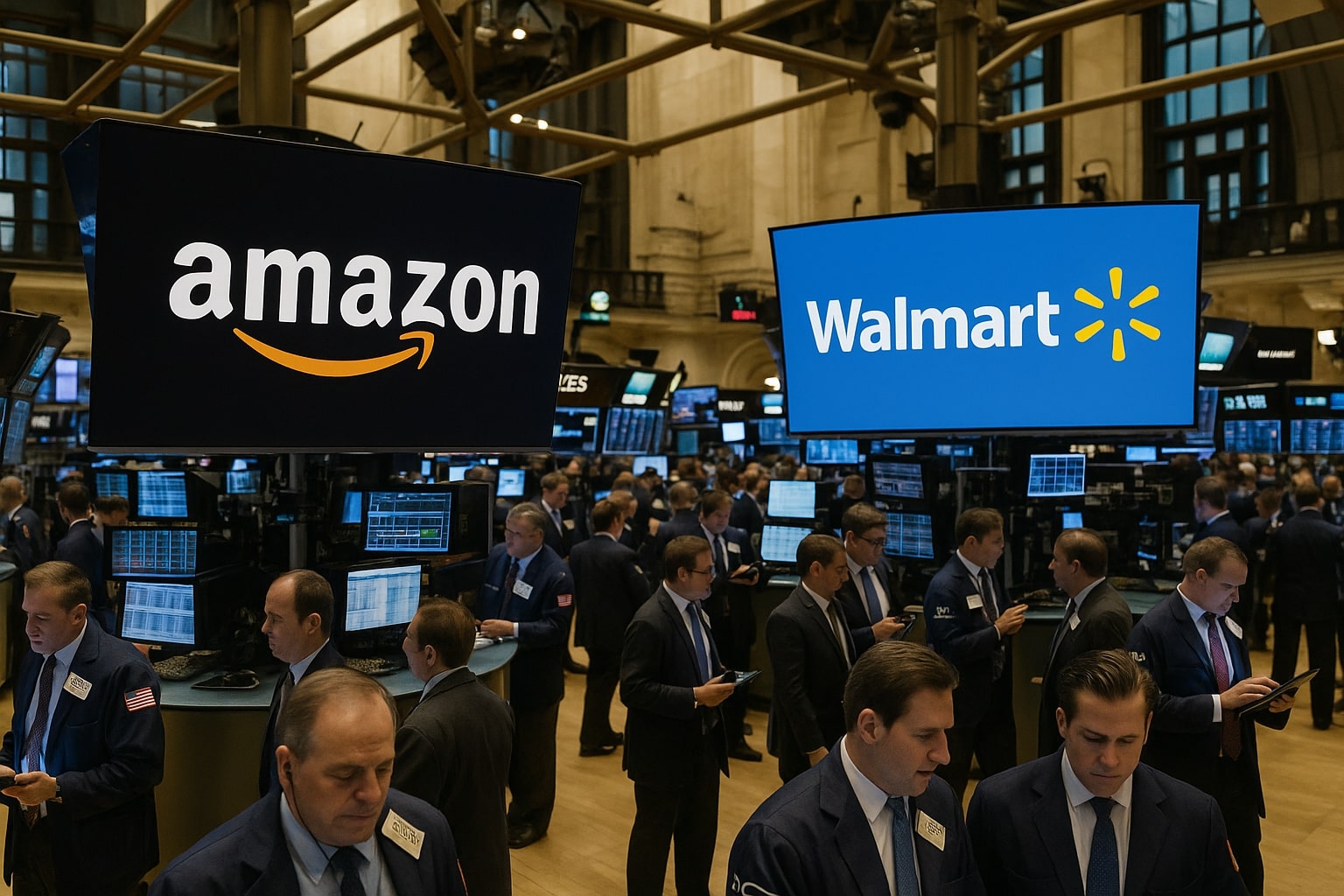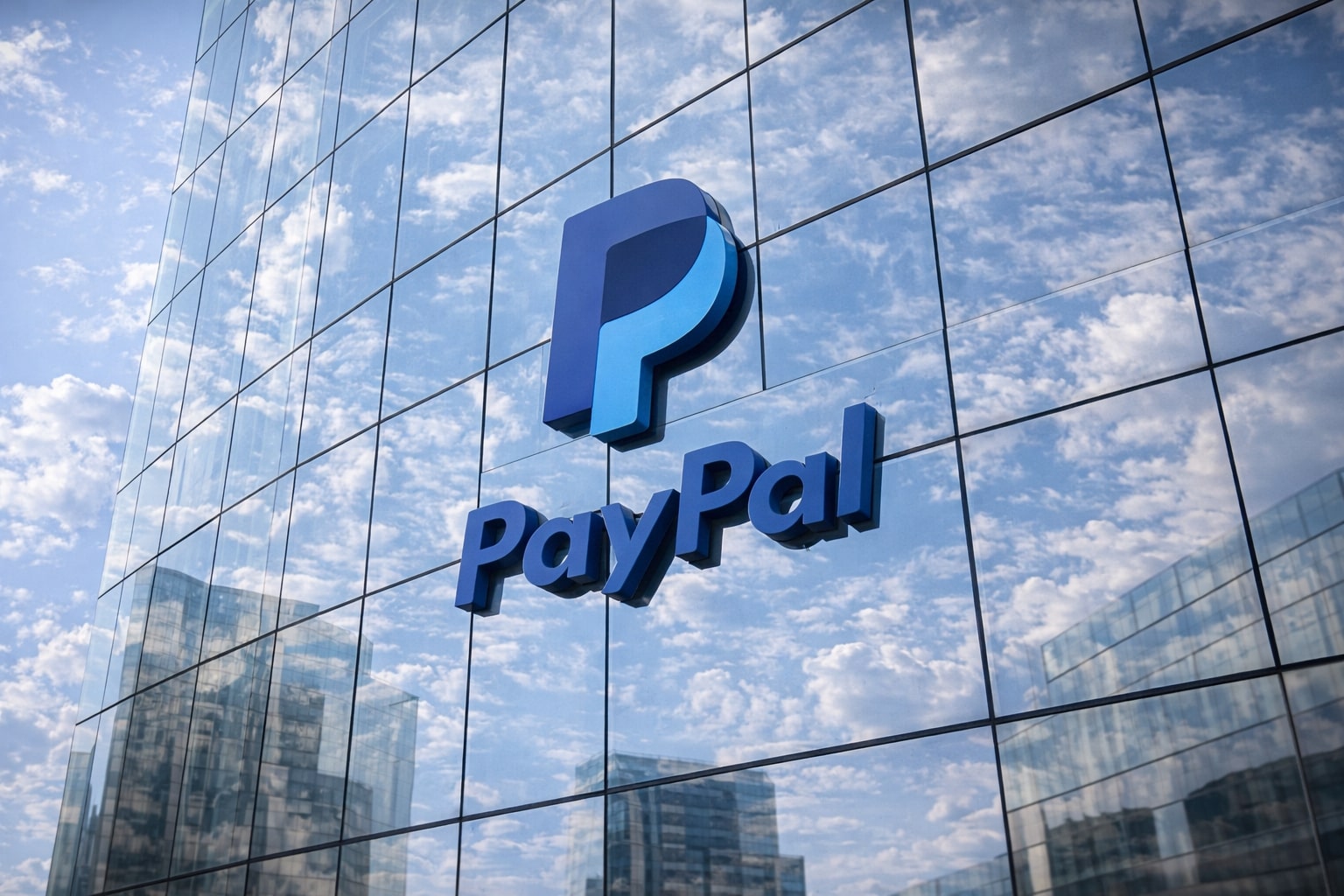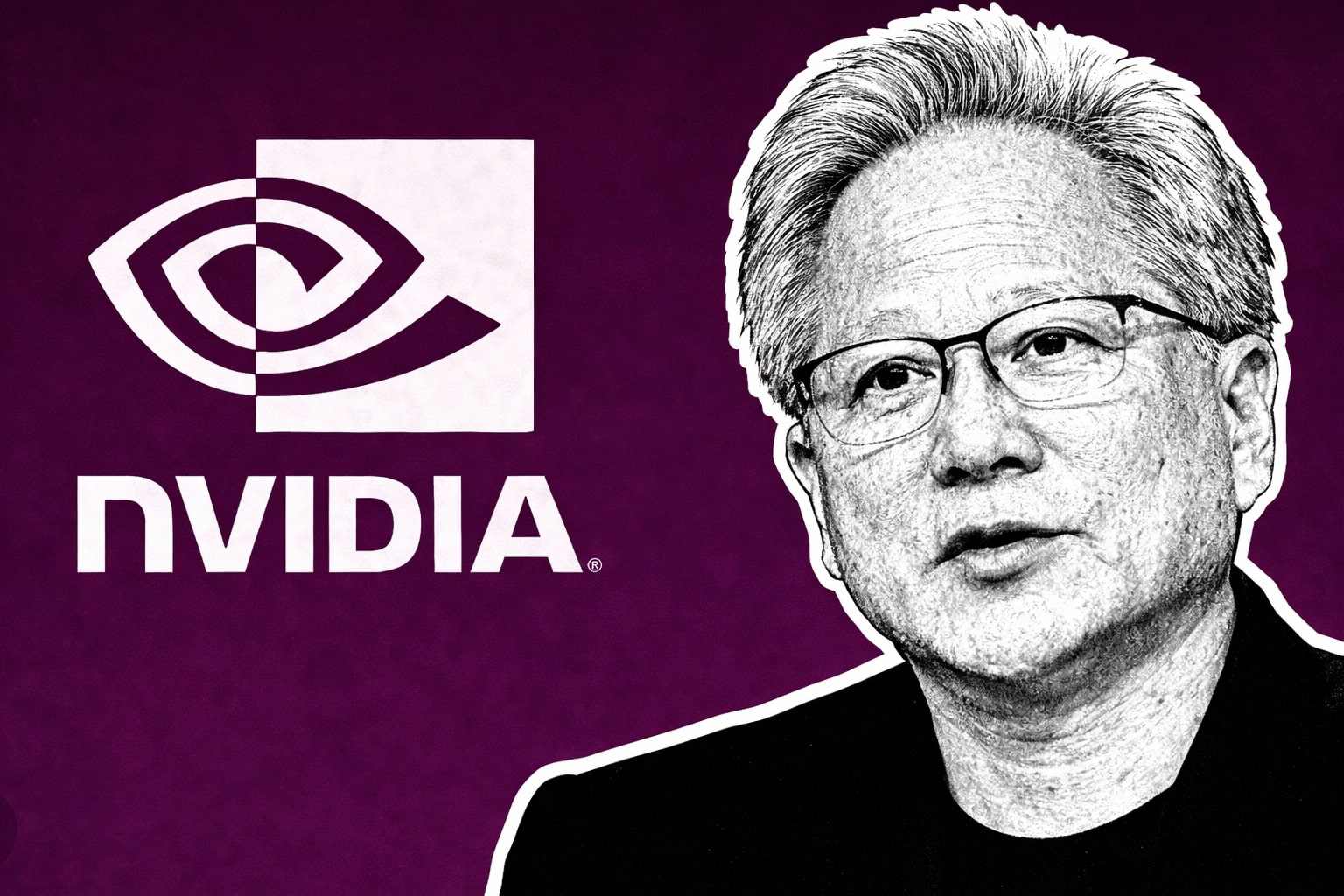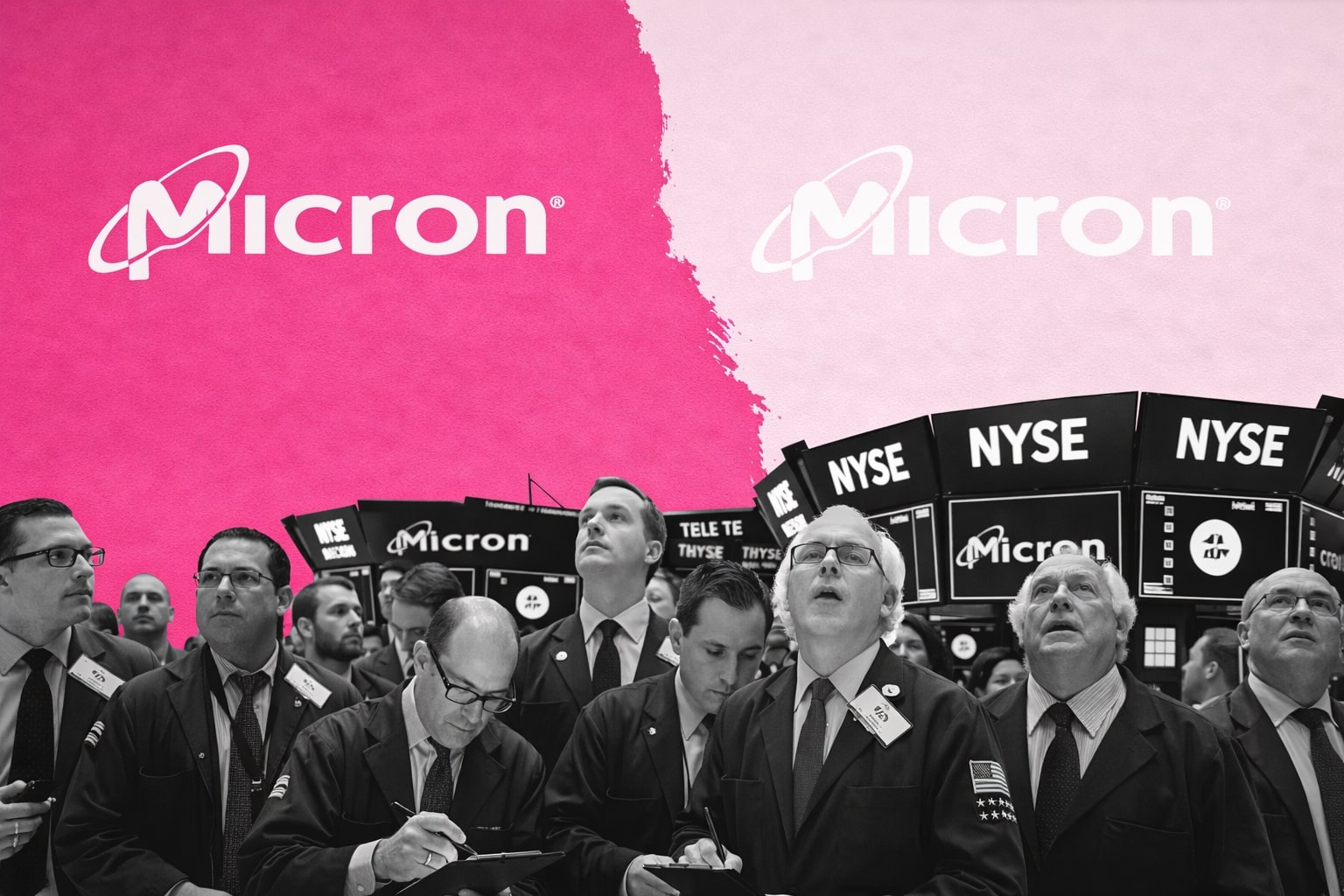
Walmart Stock (NYSE:WMT) $105.94 vs Amazon Stock (NASDAQ:AMZN) $230.26 – Profit and Growth Show Clear Winner
Walmart posts $693B revenue and 25% e-commerce growth but fights $11B shrink losses; Amazon delivers $70.6B profit, AWS +17.5%, ads +23%, with analyst targets $263–$300 | That's TradingNEWS
Walmart (NYSE:WMT) at $105.94 vs Amazon (NASDAQ:AMZN) at $230.26 – Two Retail Titans Shaping Divergent Paths
Walmart (NYSE:WMT) closed at $105.94, near the upper end of its 52-week range of $77.88–$108.95, supported by a market capitalization of roughly $425 billion. Amazon (NASDAQ:AMZN) trades at $230.26, giving it a market value above $2.45 trillion, placing it among the top three U.S. companies by capitalization. Both stocks are leaders in global retail, but their market positioning, growth trajectories, and margin structures are diverging sharply. Over the past twelve months, Walmart has advanced about 30%, while Amazon has gained 23.2%, yet year-to-date Amazon has only managed a +4.9% gain, lagging the S&P 500’s +12%, compared to Walmart’s steady +11%.
Revenue Scale – Walmart Leads, Amazon Grows Faster
On the top line, Walmart remains the largest company in the world by revenue, posting $693.51 billion in trailing twelve-month sales, growing at 4.9% YoY. Amazon follows closely with $670.04 billion, but its growth rate is faster at 13.3% YoY, showing how e-commerce, cloud computing, and advertising are expanding Amazon’s revenue base at double the pace of Walmart’s. The balance of profitability, however, is striking: Walmart generated $21.35 billion in net income, translating to a 3.08% margin, while Amazon posted $70.62 billion, achieving a far stronger 10.54% margin. This structural difference underscores Amazon’s ability to leverage technology, data, and scale in higher-margin segments that Walmart lacks.
Margins, Profitability, and Capital Efficiency
Amazon’s gross profit stands at $332.38 billion, with EBITDA of $133.83 billion, compared to Walmart’s $162.44 billion gross profit and $38.62 billion EBITDA. These figures highlight Amazon’s edge in capital efficiency: its return on equity (ROE) is 24.8%, more than double Walmart’s 9.85%. Walmart has faced rising shrinkage losses estimated at $11 billion annually from theft and inefficiencies, which drags heavily on its already slim margins. Amazon, while facing new labor expenses—about $1 billion in wage hikes in the U.S. and U.K.—offsets this through AWS’s strong profitability and rapid growth in digital advertising.
AWS Cloud and AI – Amazon’s Margin Engine vs Walmart’s Omni-Channel Push
Amazon Web Services continues to deliver structural advantage, growing 17.5% YoY and sustaining an annual run-rate above $123 billion. AWS remains the single largest driver of operating income, with capacity constraints now the only brake on growth. Amazon’s 1.9 GW nuclear power contract with Talen Energy is aimed at expanding its data center footprint, with demand currently outstripping supply. Advertising revenue rose 23% YoY, powered by Prime Video and DSP partnerships with Netflix, Disney, and Roku. Walmart, by contrast, is pushing an omni-channel model—its e-commerce operations grew 25% YoY as it leverages its 4,700 U.S. stores for pickup and last-mile delivery. Walmart has also launched “Sparky,” an AI agent for digital shopping, but it remains far behind Amazon’s AI and cloud ecosystem in terms of both scale and profitability.
Guidance and Growth Outlook – Amazon More Aggressive
Amazon guided Q3 revenues between $174–$179.5 billion, implying 11% YoY growth, with operating income ranging $15.5–$20.5 billion, offering upside of +17.8% YoY if it hits the top of the range. Truist recently raised its target to $270 after data showed Amazon’s North American sales were running $1 billion above consensus. Walmart’s outlook is steadier, with analysts projecting mid-single digit revenue growth into FY2026, but downside risks remain if shrinkage is not contained. Analysts expect Walmart’s EPS to rise in the mid-single digit range, while Amazon’s EPS is projected to grow at 20%+ CAGR driven by AWS and ads.
Macro and Tariff Risks
For Amazon, U.S.–China tariff policy is a major risk. Current tariffs remain at 10%, but if negotiations fail before November 10, they could snap back to as high as 30–55% effective rates. Given that 25% of Amazon’s 1P cost of goods sold comes from China and more than 50% of its top third-party sellers are based there, exposure is material. Walmart is less vulnerable due to its domestic grocery dominance, but still relies on imports for apparel, electronics, and general merchandise. Rising labor costs affect both companies—Walmart employs 2.1 million globally, Amazon about 1.5 million—but Amazon has offset wage inflation by reducing healthcare contributions for U.S. employees, while Walmart faces a tougher battle with retention and shrinkage.
Read More
-
PYPL Stock Price Forecast - PYPL at $59.91; Is It a Bargain or Value Trap?
18.12.2025 · TradingNEWS ArchiveStocks
-
XRP Price Forecast: XRP-USD Slides Below $2 as Sellers Target the $1.80–$1.90 Zone
18.12.2025 · TradingNEWS ArchiveCrypto
-
Oil Price Forecast - Oil Stalled Near $56–$60 as Venezuela Blockade Clashes With Oversupply Outlook
18.12.2025 · TradingNEWS ArchiveCommodities
-
Stock Market Today: Nasdaq, S&P 500 And Dow Jump As CPI Cools And MU Stock Rockets
18.12.2025 · TradingNEWS ArchiveMarkets
-
GBP/USD Price Forecast - Pound Holds 1.34 as BoE’s 3.75% Rate and Weak US CPI Pressure the Dollar
18.12.2025 · TradingNEWS ArchiveForex
Valuation and Analyst Targets – Amazon Offers More Upside
Walmart trades at a TTM P/E of 31.1 and forward P/E of ~27, expensive relative to its growth profile. Analyst targets range from $98 to $125, implying limited upside from today’s $105.94. Amazon trades at TTM P/E of 35.7 and forward P/E of 30.1, a lower multiple relative to its higher growth. Analysts see consensus at $263.30, with bull targets as high as $300, representing a +17%–30% upside from today’s $230.26. Amazon’s valuation is supported by its superior growth levers, while Walmart looks more defensive, positioned for modest appreciation but unlikely to deliver outperformance at current multiples.
Insider and Institutional Activity
Institutional investors remain firmly committed to both. Walmart shows about 65% institutional ownership, while Amazon is higher at 66.3%. Walmart insider activity here shows some recent selling into strength, similar to Amazon insider activity here, where executives have trimmed positions despite strong guidance. Insider caution reflects broader market volatility rather than structural weakness, but institutional accumulation continues to support both stocks, particularly Amazon, where fund inflows remain robust.
Investment Verdict – Walmart Hold, Amazon Buy
At $105.94, Walmart remains a cornerstone defensive name, benefiting from groceries, scale, and steady e-commerce growth. However, shrinkage, labor costs, and thin margins limit upside to analyst targets near $115–$125. Amazon at $230.26 is positioned for stronger appreciation: AWS up 17.5%, advertising up 23%, and Q3 guidance at $176.75 billion midpoint revenue provide a clear runway for profit expansion. With consensus pointing toward $263–$300, and a technical breakout likely above $240, Amazon offers a stronger growth-adjusted return profile. Verdict: Walmart Hold, Amazon Buy.


















